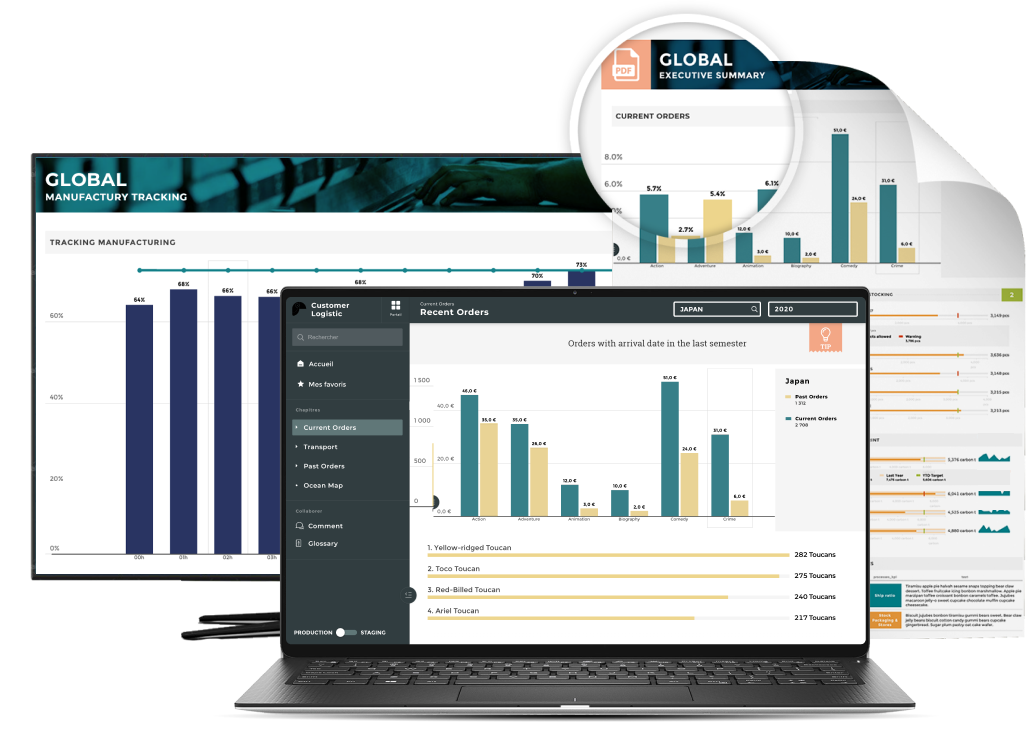The ability to quickly sift through volumes of information and extract actionable insights is more important than ever in any company. This is where analytical databases come into play, designed specifically to supercharge the analysis process. Unlike their transaction database counterparts, which are built for day-to-day operations, analytical databases are engineered to handle complex queries and large-scale data operations with ease.
Let’s explore the ins and outs of analytical databases—what they are, how they work, and why they are indispensable in the landscape of business intelligence.
What is an analytical database?
An analytical database is a specialized type of database designed primarily for storing, processing, and querying large sets of data for the purpose of analysis rather than transaction processing. Unlike operational databases that handle everyday data transactions and updates efficiently, analytical databases excel in making complex, large-scale data accessible and usable quickly and efficiently.
Here's some key characteristics:
- Optimized for read access:
Analytical databases are optimized for read-heavy operations. They are engineered to handle complex queries that involve aggregating large volumes of data, such as those required for financial reports, market trend analysis, and big data analytics. - Columnar storage:
One of the defining features of many analytical databases is columnar storage. Unlike traditional row-based storage, which is ideal for entering and retrieving individual records, columnar storage organizes data by columns. This arrangement significantly speeds up the reading of large datasets because only the necessary columns involved in a query need to be accessed and processed. - Data indexing:
Analytical databases use advanced indexing strategies to speed up data retrieval. These indexes are typically designed to support the specific types of queries that are most common in data analysis, such as those involving aggregation and complex joins. - Scalability:
With the growth of data, scalability becomes a critical feature. Analytical databases are built to scale horizontally, meaning they can expand by adding more servers, which allows for the distribution of data and query load across a system. This scalability ensures that performance does not degrade as data volume grows. - Data compression:
To manage large volumes of data efficiently, analytical databases often employ various compression techniques. Data compression reduces the physical storage requirements and speeds up query performance by minimizing the amount of data that needs to be read from disk. - Designed for analysis: The structure and functions of analytical databases are tailored to the specific needs of data analysis, providing businesses with the ability to derive insights that inform strategic decisions and improve operational efficiencies. By focusing on analytical capabilities, these databases play a pivotal role in areas like business intelligence, where understanding past performance and forecasting future trends are critical.
How analytical databases work
Analytical databases are engineered to manage, query, and analyze large volumes of data more effectively than standard databases. To achieve this, they employ unique architectures and processing capabilities that differentiate them from traditional transactional systems.
Architecture
- Column-oriented storage:
As mentioned, analytical databases often utilize columnar storage formats. This architectural choice is pivotal because it significantly enhances data compression and allows for faster retrieval of columns, which is beneficial when executing queries that don't need all the data contained in a record. - Massively parallel processing (MPP):
Many analytical databases use MPP, which distributes data processing tasks across many separate nodes. Each node processes its segment of data locally, reducing data movement and allowing queries to execute faster across large datasets.
Data processing
- Batch processing:
Analytical databases are typically optimized for batch processing, handling large blocks of data at once. This is ideal for complex analytics and reporting that involve aggregating data over time, such as calculating monthly sales totals or performing year-over-year growth analysis. - In-memory analytics:
To speed up data analysis further, some analytical databases leverage in-memory technology, storing entire databases or frequently accessed parts in RAM. This dramatically reduces the time it takes to process queries because the data doesn't need to be read from disk. - Caching:
Effective caching strategies are another crucial component. By caching frequently accessed data and query results, analytical databases can provide quicker access to data and reduce the load on the database engine, speeding up query response times for common requests.
Optimization techniques
- Advanced indexing:
Analytical databases typically employ sophisticated indexing techniques that go beyond simple B-tree or hash indexes. Bitmap indexes, for example, are especially useful for queries that involve multiple criteria and can dramatically speed up data retrieval in analytical contexts. - Query optimization:
These databases incorporate advanced query optimizers that can rearrange and optimize query execution plans based on the data structure and the query itself. Query optimizers analyze the best way to execute a query considering current system conditions and data locality, reducing computation time and resource consumption. - Benefits of specialized workloads:
By focusing on these specialized architectures and techniques, analytical databases can handle specific, read-intensive workloads that are typical in business intelligence applications. They are capable of processing complex analytical queries much faster than transactional databases, which are optimized for quick updates and deletions.
Types of analytical databases
Analytical databases come in various forms, each tailored to specific needs and data handling scenarios. Understanding these variations can help organizations choose the most appropriate type for their data analysis requirements.
1. Columnar databases
Columnar databases store data by columns rather than by rows. This format is ideal for analytical querying because it allows for faster retrieval and aggregation of data, which are common in analysis tasks. Columnar databases are highly efficient in compression and performance when dealing with large datasets.
2. Data warehouse appliances
These are pre-configured hardware and software solutions that combine storage, computing, and database software into a single product. They are designed to integrate easily with existing data systems and offer high performance, especially for complex analytics on large data sets.
3. Cloud-based analytical databases
With the rise of cloud computing, cloud-based analytical databases have become increasingly popular. They offer the flexibility of scaling resources up or down as needed and eliminate much of the hardware management required by traditional databases. These platforms often provide robust analytics tools and integration capabilities with other cloud services.
4. In-memory databases
In-memory databases store information in the main RAM of the server rather than on traditional disk drives, allowing for significantly faster data processing and analysis. This type of database is ideal for real-time analytics and high-speed transactions.
5. Graph databases
Graph databases are designed to handle data whose relations are well represented as a graph and are ideal for analyzing interconnections. They are particularly useful in social networking, fraud detection, and complex hierarchical data environments.
Analytical VS. transactional databases
Understanding the distinction between analytical and transactional databases is crucial to ensure that businesses deploy the right technology for the right task.
- Transactional databases are optimized for CRUD (Create, Read, Update, Delete) operations. They excel in handling a large number of short, atomic operations that ensure data integrity and consistency in real-time applications, such as sales transactions.
- Analytical databases, on the other hand, are designed for complex queries involving large volumes of data. They are optimized for read-heavy environments and are not suitable for real-time data entry or high transaction volumes.
Technologies used in analytical databases
- SQL and NoSQL:
While SQL is widely used for structured data querying, NoSQL has gained popularity for its ability to handle semi-structured and unstructured data, providing flexibility in terms of database schemas and data consolidation. - Advanced analytics features:
Modern analytical databases often incorporate capabilities for predictive analytics, machine learning, and real-time data processing. Toucan, for instance, exemplifies this by integrating features that enable users to easily transform raw data into visual narratives, enhancing the decision-making process. Its user-friendly interface and powerful visualization tools make it an excellent choice for organizations looking to leverage analytics without deep technical expertise.

The main benefits of using analytical databases
- Improved decision-making:
With faster and more comprehensive data analysis capabilities, businesses can make more informed decisions quickly, staying ahead of market trends and customer needs. - Enhanced performance:
Analytical databases are specifically tuned to handle complex queries and large datasets, significantly reducing the time it takes to generate reports and insights. - Scalability:
The ability to scale out horizontally, adding more servers or resources as needed, allows businesses to manage growth effectively without a drop in performance.
In conclusion, analytical databases are essential tools for modern businesses aiming to leverage data for strategic decision-making. Their unique features, such as optimized read access, columnar storage, advanced indexing, and scalability, enable efficient handling of large datasets and complex queries.
By adopting analytical databases, organizations can enhance performance, improve decision-making, and maintain scalability to manage growth effectively. These databases play a pivotal role in transforming raw data into valuable insights, driving operational efficiencies and business intelligence.






